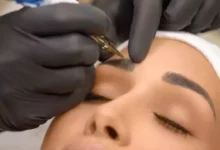From Knowledge to Action: Malaria Prevention and Control Techniques
Malaria is a major global health concern, particularly for developing nations and vulnerable populations. Despite recent noteworthy advancements, combating malaria still needs a comprehensive approach that extends beyond raising awareness and includes efficient preventative and control methods. Sr. Consultant Physician Dr. Urman Dhruv of HCG Hospitals in Ahmedabad discusses the crucial strategies meant to reduce malaria transmission, improve treatment accessibility, and eventually achieve the ambitious goal of eliminating malaria.

Raising Awareness: Education campaigns regarding the warning signs, symptoms, and prevention of malaria are essential in teaching communities. Communities may take preventative action against malaria by spreading the word about the need to use bed nets treated with insecticide, getting medical attention for fevers quickly, and removing mosquito breeding grounds.
Execution of Vector Control Measures: Vector control initiatives are essential to the fight against malaria. Methods such as the use of long-lasting insecticidal nets (LLINs) and indoor residual spraying (IRS) have shown promise in reducing the spread of malaria. Additionally, cutting-edge methods like larviciding and genetically engineered mosquitoes hold promise for further lowering mosquito numbers and ending the malaria transmission cycle.
Enhancing Access to Diagnosis and Treatment: Early detection and intervention are critical to reducing malaria-related illness and mortality. Fast diagnosis of malaria, even in distant locations, is made possible by rapid diagnostic tests (RDTs), which allow medical professionals to start treatment on time. To prevent drug-resistant forms of malarial parasites from emerging, it is essential to guarantee access to antimalarial drugs such as artemisinin-based combination treatments (ACTs).
Strengthening Health Systems: Long-term attempts to combat malaria need the establishment of strong health systems. This includes providing enough training to medical professionals on how to diagnose and treat malaria, establishing reliable monitoring systems to track the disease’s incidence, and ensuring that necessary medications and supplies are available. For the purpose of promoting multi-sectoral approaches to malaria prevention and maximizing resource allocation, it is essential to fortify collaborations between civil society organizations and governmental and commercial institutions.
Empowering Communities: Effective malaria prevention and management depend heavily on community engagement and empowerment. Sustainable improvement may be made by involving communities in decision-making processes, deploying community health workers, and encouraging local ownership over efforts targeted at containing malarial epidemics. Giving communities the tools they need to take control of their health fosters accountability and encourages the adoption of preventative measures.
The shift from spreading awareness to putting evidence-based treatments into practice calls for a multipronged approach to the scourge of malaria prevention and management. Significant progress may be achieved in reducing the impact of malaria while working toward the lofty goal of completely eliminating the disease by strengthening health systems, expanding access to diagnostic and treatment services, and empowering communities. On this World Malaria Day, let’s renew our commitment to converting awareness into concrete measures that will help future generations escape the horrors of malaria.







